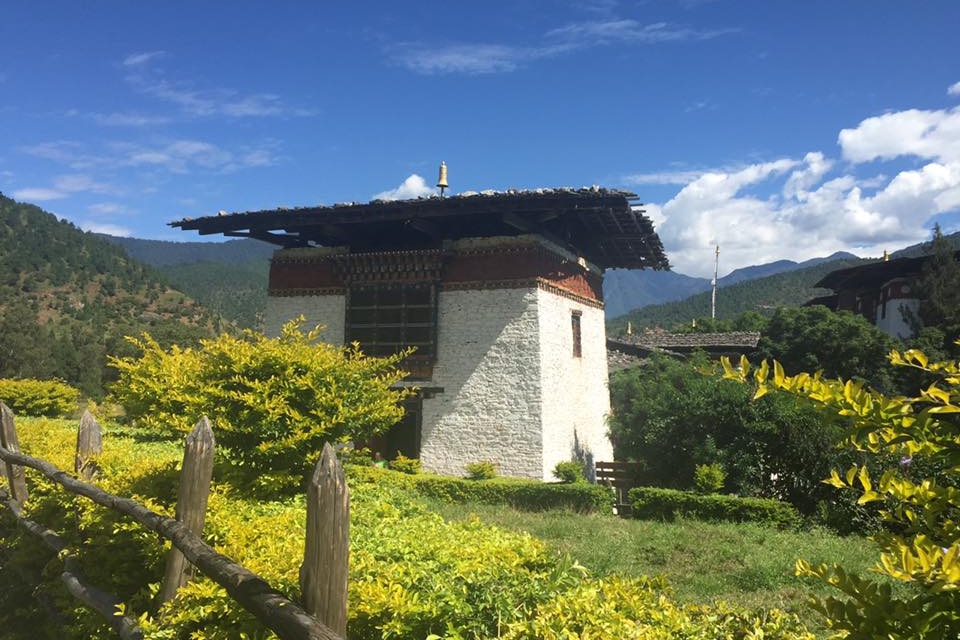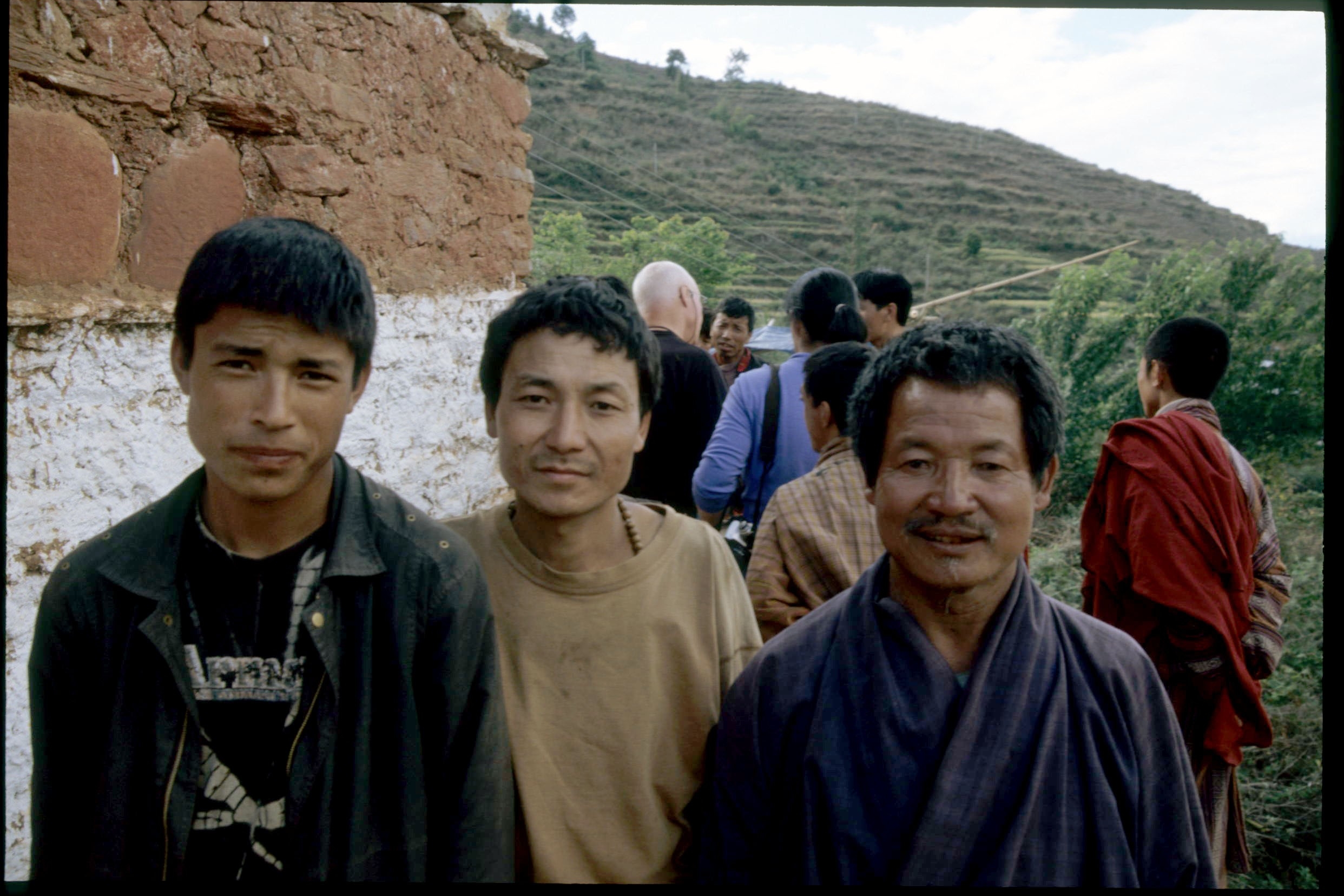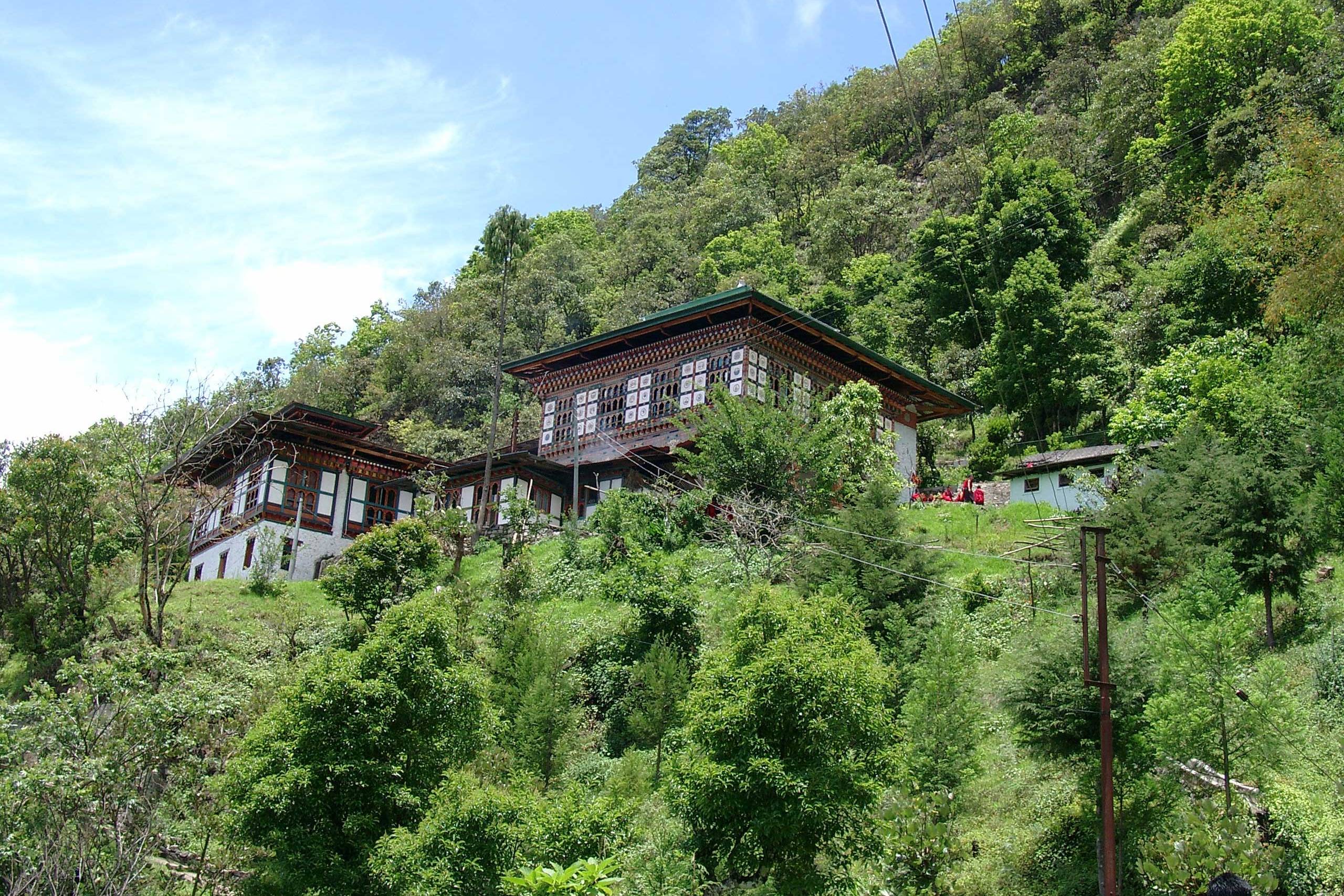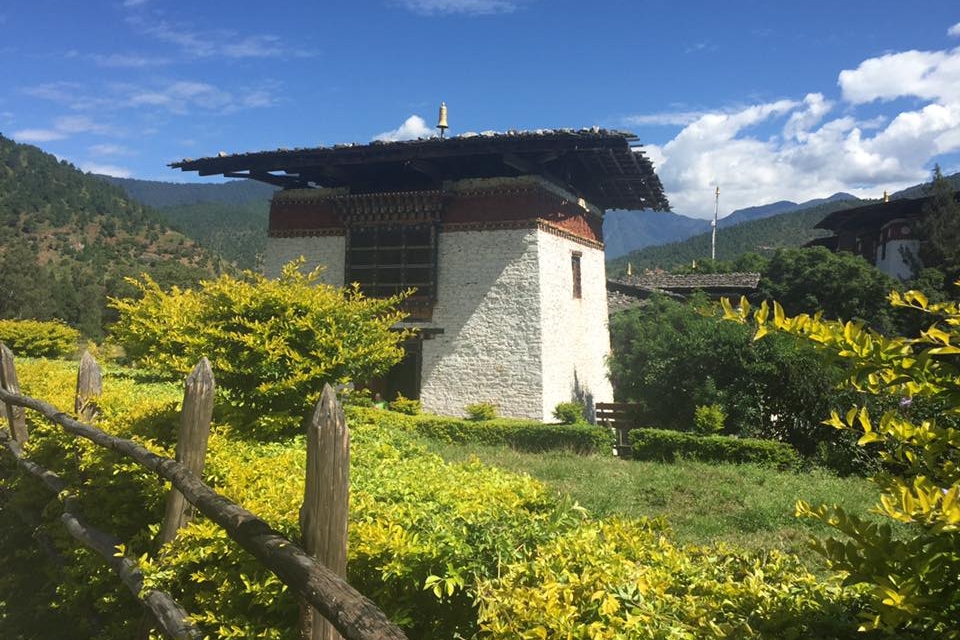3***hotel twin sharing bed basis during the Tour in India and Bhutan.
From your place, you can fly to Kolkata Netaji Subhas Chandra Bose International Airport, India. After baggage and custom clearance, you will be transferred to your respective hotel by one of the representative of Nature Trail Travel &Tours, Trekking & Expeditions. At evening, you can take a pleasant walk around Kolkata town. Kolkata is the capital of West Bengal and the second largest city in India (after Mumbai). Kolkata is the main business, commercial and financial hub of eastern India. Kolkata witnessed an economic decline from the late sixties till the late nineties. Kolkata is a multicultural, cosmopolitan city. Apart from the diversity of India, the cultures represented are that of the Europeans (Including Germans, Armenians, and others), and other Asians (Including Chinese, Sinhalese, and Tibetans). Kolkata is reasonably safe, and in general the people are more friendly and helpful than in many of India’s other large cities.
The day isfree to explore Kolkata, before taking an overnight sleeper train from Kolkata to Siliguri.During your free time, you can perhaps discover the world’s largest tree (The Great Banyan Tree) at the A. J. C. Bose Botanic Gardens, the place where tea was first cultivated in India. Explore the streets of the BBD Bagh, the heart of Kolkata and one of the best areas of British colonial architecture in the world. Possibly visit and support the Usthi Foundation’s school and farm for impoverished children in Kolkata, and see the amazing work they do (if available). Visit the Eden Garden, the most famous and iconic cricket stadium in India. See the famous Howrah Bridge over the Hooghly River, thought to be the busiest bridge in the world with 150,000 pedestrians and 100,000 vehicles crossing every day. Discover the incredible array of art and historical artefacts on display at the Indian Museum in Kolkata, the largest and oldest museum in India. Explore the vast fields and parks of the Maidan (the ‘lungs of Kolkata’) and observe daily life away from the chaos of the city. See the huge white marble Victoria Memorial, built in the early 20th century by the British Viceroy of India and a grandiose reminder of Kolkata’s colonial past. Visit the Mother Teresa of Calcutta Centre, a museum illustrating the life and work of the famous and controversial missionary.You can also visit the museum which is the largest and oldest museum of Indiaand is located near Esplanade.If time permits, visit the largest temple of Kolkata which is It’s located on Ashutosh Chowdhury Avenue (OldBallygunge Road) in Ballygunge. There are plenty of things to see and do. Thus, you can contact Nature Trails Travel & Tours, Trekking & Expedition’s if you would like help in booking pre-tour accommodation in Kolkata.
Early morning, our train stops at the Siliguri Station. From here, we take a four wheel drive along the narrow but steep path to reach Darjeeling. We pass through the winding roads and drive for about two hours in order to reach Darjeeling. Darjeeling is situated on a high ridge, linked by a series of steps and winding lanes at an elevation of 6,700 feet above sea level.Surrounded by rice and tea terraces, Darjeeling is a town that is really more a collection of villages. The resultant distinctive Darjeeling tea is internationally recognized and ranks among the most popular of the black teas.Views are amazing from here, so take a walk and get your bearings of the area. One can observe the spectacular views of Kangchenjunga, the world’s third-highest mountain, and the Darjeeling Himalayan Railway, a UNESCO World Heritage Site. The cool climate and slow pace of life here are an abrupt contrast to the rest of India. It’s a pleasant place to explore, with monasteries and tea plantations to visit and Tibetan craft shops and markets to browse through.
Early in the morning, drive to Tiger Hill to see the spectacular sunrise view. You can also see the incredible view of Mount Kanchenjunga, the third highest mountain in the World. Take a scenic ride on the famous Darjeeling Himalayan Railway up to Ghoom, the highest train station in India. The views are fantastic from here, looking down onto the rivers below with Mount Kanchenjunga in the background – and on a clear day even Mount Everest can be seen in the distance. Perhaps visit the Tibetan Refugee Self Help Centre near Darjeeling, a home, hospital, and craft center for Tibetans who have fled persecution and taken sanctuary in India. You can also visit the huge and colorful Dali Monastery near Darjeeling, the residence of the supreme head of the Kagyupa sect of Buddhism. Visit the Japanese Peace Pagoda in Darjeeling, one of a series of stupas built worldwide to promote world peace and non-violence. Explore the Happy Valley Tea Estate, the oldest tea plantations in Darjeeling, and learn all about the tea industry for which the area is famous. See the museum at the Himalayan Mountaineering Institute, containing many exhibits from mountaineering history and the grave of Tenzing Norgay, one of the first men to summit Mount Everest.
Retrace your steps back to Siliguri today. If you want, you can explore the nearby tourist spots. Perhaps visit Triratna Monastery, 15 – 20 minutes from Siliguri a monastery in the Nyingma tradition of Tibetan Buddhism. Visit Dudhia, a picturesque tourist spot. ExploreMahananda Wildlife Sanctuary, a wildlife sanctuary at the foothills of the Himalayas. One can hire a vehicle and enter the sanctuary at a minimal entry fee. Different types of wild animals are found here. However it is famous for its wild elephants and peacocks. However, the sanctuary is closed during monsoon seasons, i.e. 15th July to 15th September. Visit North Bengal Wild Animals Park, which contains, a leopard, tiger, rhino, deer and Himalayan black bear safari, bird aviaries, small cats compound, crocodile ponds and a botanical trail. Possibly visit Sed-Gyued Institute of Buddhist Studies, Salugara, inaugurated by the Dalai Lama in 1999; thisinstitute is in the Gelepu tradition of Tibetan Buddhism. The compound includes a 100-foot Tashi Gomang Stupa.
The Bhutan Government buses depart for Phuntsholing at 7:30 am and 1:30 pm every day from the bus station. There are more frequent Indian buses to the border town of Jaigaon. From this border you’ll exit India and enter Bhutan kingdom. There you will be welcomed by our Bhutanese guide. If you haven’t got the Visa then our leader will collect all you passports to get the visa process underway, in order to save time in the morning. In the evening, if you are not really tired then you can explore the beautiful town.
This morning, enjoy a leisurely breakfast while the visa process is underway. Once officially inside Bhutan, drive from the warmer climates of Phuntsholing up to dragon kingdomParo, nestled in the foothills of the Himalayas. Paro is a beautiful valley and is home to many of Bhutan’s oldest monasteries and temples, and the country’s only international airport. Today’s driving time will take around six to seven hours.Before dinner, at the hotel there will be an orientation on Bhutanese etiquette by your guide.
On this following day, we will have a short hike up to Taktsang monastery. Taktsang is a prominent sacred Buddhist site and temple complex perched on the edge of upper Paro Valley. It is also known as the Tiger’s Nest. This magical monastery clings to a vertical granite cliff 300 meter above the valley.Legend has it that the great Guru Padmasambhava flew to this spot on back of a tigress and meditated in a cave during the 8th century. When the Guru finished his meditation, he instructed to be builtthe monastery. The temple was built around the cave and is a hallowed shrine for Bhutanese pilgrims.The spectacular view along the way and the historical sites draw many tourists to this imposing monastery. There are also a number of temples scattered along the route. Later we’ll turn to the Paro Dzong, a large Buddhist monastery and fortress, which is considered the best example of Bhutanese architecture. Now it also houses the district Monastic Body and government administrative offices. On the hill above the Dzong stands an ancient watchtower called Ta Dzong, which is the National Museum of Bhutan. Visit Ta Dzong Museum housing many religious relics, works of art and handicrafts offering a great orientation into Bhutan’s historical, cultural, and religious past.This Dzong was converted into the National Museum in 1968. The museum boasts antique thangkas, textiles, weapons and armor, household objects and rich assortment of natural and historic artifacts.Here you can also learn about Bhutan’s history.
After breakfast, visit Rinpung Dzong, meaning ‘fortress of the heap of jewels’to see the painting of the great saint Milarepa, considered as the master of meditation by the Bhutanese and believed to have attained enlightenment in a lifetime. The Dzong is now used as an administration center and school for monks. Dzong’s are large monasteries and district administrative centers, which were once strategic forts.Next, we visit Kichu Lhakhang, the oldest temple in the country. From here we will be taken to the Drugyal Dzong (Bhutan Victory Fort), which was built in 1646 to commemorate Bhutan’s victory over Tibetan invaders during the 1600s. On a clear day we can see Mount Chomolhari, Bhutan’s second-highest mountain, at 7,314meters. Further, drive for about two hours to reach Haa Valley, a steep north-south valley with a narrow floor. Haa valley lies on the Haa District along the western border of Bhutan. An alternative name for the district is “Hidden-Land Rice Valley”. Enroute we come across Chele La Pass (3810 m). The pass is dotted with colorful Buddhist prayer flags and offers stunning views of Mount Chomolhari and the valley below. We hike further down the pass to the Kila Gompa Nunnery, which is perched precariously along the rock face. Next, walk for a few miles through coniferous forests before driving downhill towards the picturesque Haa Valley. The valley is a narrow plain land sandwiched between two steep mountains. It is an awesome place to spend your time in peace away from the hustle bustle of the cities. This palace also has the ability to turn you speechless when the sun sets in the most amazing part of Haa Valley.
Explore around the valley for few hours. Haa valley is not so frequented by tourists and is a real hidden gem. This is an ideal place to spend your time in peace, take a river side walk and go out for hiking. Indian armies have a large base here and there is a small township around this army base. The Dzong in the Indian army premises is one of the attractions and worth a visit. The area is extremely well maintained with a small well-manicured mini golf course. Just in one side of the market you will see a majestic conical green covered hill. The breath taking views of the Haa valley is something a nature lover will always cherish. There are tons of birds, beautiful flowers and humongous mountains to look at. For the photographers, this place offers a wide range of 360 degree panoramic shots. After a short sightseeing tour around the valley, we drive to Thimphu, the capital of Bhutan. The ride is pleasurable through beautiful villages and pine forests. After passing Dobji Dzong, our trail descends and joins the main road at Chhuzom. We can stop here and enjoy watching local farmers sitting by the roadside and selling vegetables, apples and dried cheese. Continuing our drive further, we reach Thimphu for our overnight stay.
After appetizing breakfast, we will proceed for full day sightseeing tour in Thimphu. Initially, we start our sightseeing tour with a visit toNational Memorial Chorten. This temple was first initiated by the Third King as a protection from the negative elements of modernization, and as a monument to world peace. The Royal Queen Mother completed it as a memorial Stupa for the Third King who passed away in 1972. Then we will continue our visit to 12th century Changangkha Temple and Drubthob monasteryhousing the Zilukha Nunnery. If you want to see Takin, the national animal of Bhutan then you can proceed onto mini-zoo. The Takin (a goat-antelope) was declared the national animal of Bhutan because it is strongly associated with the country’s religious history and mythology. After sightseeing of these sites, if you still have some time left then you can visit to National Library, the priceless collection of Buddhist manuscripts and few English version books; Folk and Heritage Museum, which displays day to day livelihood of typical Bhutanese farmers in medieval period and their accessories; Late King’s Memorial Stupa, built for the world peace and Traditional Handmade Paper Factory; Painting School, which preserves our traditional paintings, sculpturing and wood curving and National Handicraft Emporium, the best place to look for souvenir from Bhutan. You can also visit the Rinpung Dzong, meaning ‘fortress of the heap of jewels’ to see the painting of the great saint Milarepa, considered as the master of meditation by the Bhutanese and believed to have attained enlightenment in a lifetime. The Dzong is now used as an administration center and school for monks. Dzong’s are large monasteries and district administrative centers, which were once strategic forts. Some of the landmarks are closed on the weekend (Saturdays and Sundays). Therefore, if your visit to Thimphu coincides with the weekend, you can walk through the Thimphu Market to see the variety of food of Bhutan, including basket upon basket of fiery chilies, cheese and a variety of greens. (This market is open only from Friday-Sunday). After a full day sightseeing tour in Thimphu, we further drive to Punakha, valley famous for the massive amount production of crops and fruits.
After breakfast, we set out on a scenic drive to Punakha with a stop at Dochu La pass (3,100m) for a hot drink, where on a clear day we can get spectacular views of the Eastern Himalaya ranges. You’ll probably notice the change of climate and vegetation as we approach the low-lying Punakha at 1,250 metres altitude.From the pass, we drive downhill through rhododendron, fir and hemlock forests. We stop at Lobesa and hike through rice paddies to Chimi Lhakhang temple. This temple is dedicated to Drukpa Kuenley, or the ‘Divine Madman’, who is believed to bless women who seek fertility. On arrival to Punakha this afternoon, visit the strategically placed Punakha Dzong (Palace of Great Happiness) at the confluence of the Po Chu and the Mo Chu rivers. If time permits observe the incredible 52m-tall golden Buddha Dordenma statue in the hills above Thimphu, the largest sitting Buddha statue in the world. Tonight, spend the night in a traditional farmhouse and relax before another day of travel.
On the following day, we drive to Trongsa. Trongsa is the gateway to central Bhutan at 2,180 metres. Set amid spectacular scenery, Trongsa Dzong, the ancestral home of Bhutan’s royal family, commands the eye from miles away. You’ll also be able to visit Ta Dzong, which is the newly opened museum in the watchtower. Dedicated to the Wangchuk dynasty, it tells the stories of the Dzong and the valley, featuring personal belongings of the kings and queens of Bhutan. Continue through some of Bhutan’s most idyllic landscapes to Bumthang, an area of high valleys that sits between 2,580 – 3,100 metres. On arrival at Bumthang, you will stay in a local farmhouse where you’ll experience a genuine slice of Bhutanese life and hospitality. The facilities here are quite basic, but the accommodation is exactly how a typical Bhutanese family live; and the food are in no way adapted for tourists.
Sightseeing tour in the spiritual heartland of Bhutan includes many legendary monasteries, temples and palaces. Take a beautiful 6-hour hike into the hills above Bumthang to visit the peaceful and remote Padtshaling Monastery. Visit the incredible Trongsa Dzong, the largest Buddhist fortress in Bhutan set against the stunning backdrop of the Black Mountains. You can also visit sacred sites including Jamba Lhakhang, Kurjey Lhakhang and Tamshing Lhakhang, followed by a visit to MembarTsho (Burning Lake), one of Bhutan’s most important pilgrimage sites. You can also visit Bhutan’s largest Dzong, Jakar, with its picturesque location overlooking the Chokhor Valley.
Drive for about six hours to reach Gangtey. Gangtey is situated at the height of 2,900 metres above sea level. On arrival, enjoy the immense views of the remote Phobjikha Valley and the Black Mountains. Move onto visit Gangtey Gompa (one of Bhutan’s oldest and recently renovated monasteries) and explore the valley where the villagers continue to live a traditional Bhutanese rural lifestyle. This is the site where black-necked cranes visit in their hundreds in November of each year, after spending the summer in Tibet. Explore the colorful, recently-restored Gangtey Gompa, a monastic college famous for its annual festival to welcome the migration of black-necked cranes.
This morning, venture out on a day walk in the valley known as the Shasi La Nature Trail. The trail is used by the people of Sha Ngawang and Chitokha to migrate between their summer and winter homes in Gangtey. It was also an important trail used by the Gangtey Truelku and his followers in the past, when migrating between his winter residence in Sha Chitokha and Gangtey Gompa. The walk takes around six hours for casual trekkers to reach Kheylaykha from Phobjikha, and is especially great for bird lovers as there’s an abundance of wildlife in the area.
Hike up to the hilltop village of Rinchengang and learn about its interesting history.Rinchengang is picturesquely situated on a steep ridge near Wangdi and then drive to Paro. Upon arrival at Paro, you can visit impressive Paro Dzong, one of the finest examples of Bhutanese architecture.
Ending our trip, you will be transferred to the airport for your flight back to home. During the flight you will enjoy breathtaking views of the Himalayan peaks that include sacred Bhutanese mountains such as Jomolhari and JitchuDrake.






Discover incredible offers for your upcoming adventure by subscribing to our newsletter with the latest travel tips and updates.
